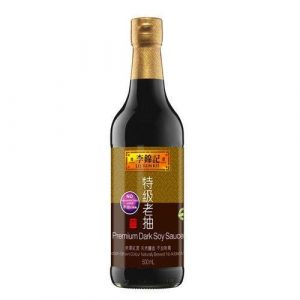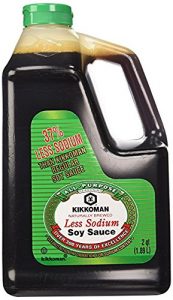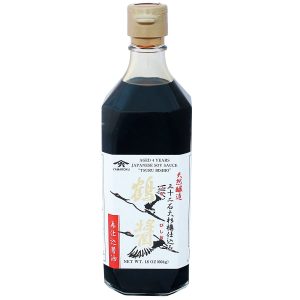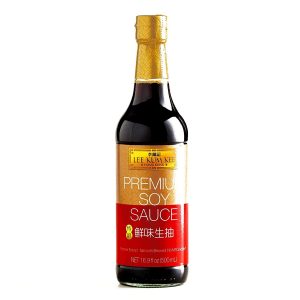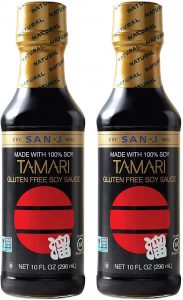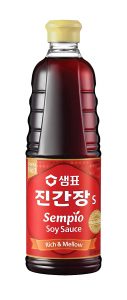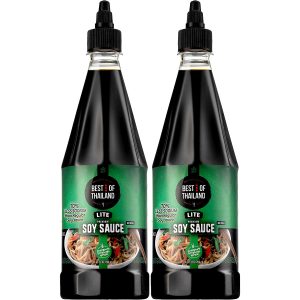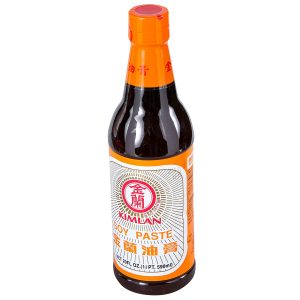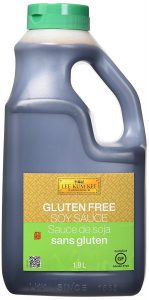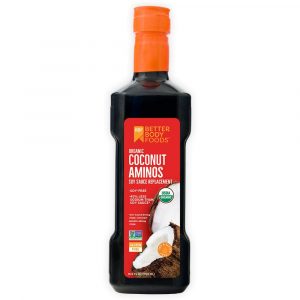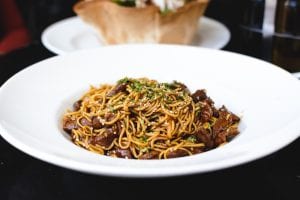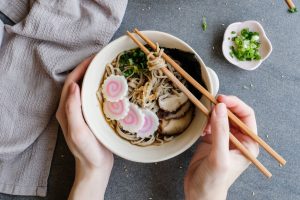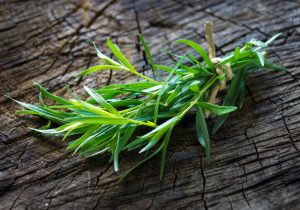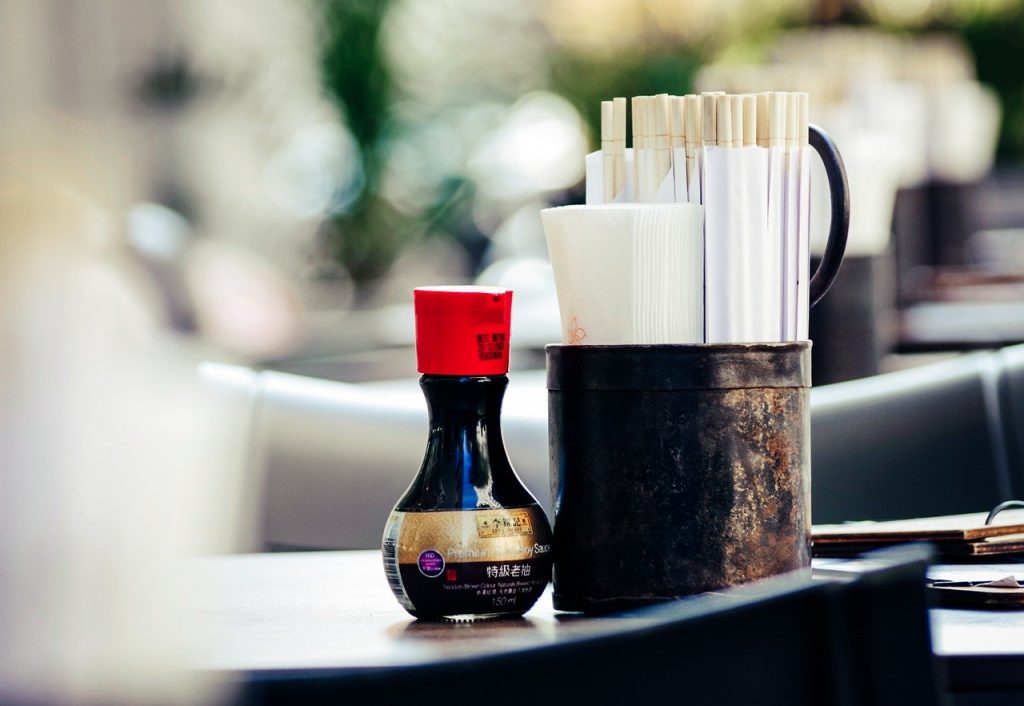
Soy sauce (also called soya sauce) is a popular dipping sauce for sushi and dishes like zucchini sushi rolls. You can also stir it into your savory recipes to give them a boost of umami flavor. But what is it, exactly? Aside from fish sauce, Worcestershire sauce, and sesame oil, this one is another Asian condiment that’s a must-have in your pantry! The best soy sauce is typically made of fermented soybeans with other basic ingredients, which include wheat and saltwater brine. No animal product is used in this condiment, hence it’s a good vegan flavoring ingredient too!
So, interested in buying one for your cooking? Then continue reading to discover our top picks for this Asian condiment this year. We’ve also answered some of the most frequently asked questions about this condiment below, as well as a few tips on how to choose the best type.
The Best Soy Sauce Options At A Glance
-
Best Overall: Kikkoman Japan Made
A best-selling product from one of the best soy sauce brands in the world.READ MORE -
Best Dark: Lee Kum Kee Premium Dark
Dark sauce with a full-bodied taste and color.READ MORE -
Best Light: Pearl River Bridge Golden Label Superior Light
Flavorful condiment from Southern China.READ MORE -
Best Low Sodium: Kikkoman Lite
Rich-tasting sauce with less sodium.READ MORE -
Best Sweet: Kecap Manis by ABC
Indonesian condiment with palm sugar as a natural sweetener.READ MORE -
Best Japanese (Shoyu): Yamaroku Shoyu "Tsuru Bisiho"
A luxurious Japanese sauce produced by artisans.READ MORE -
Best Chinese: Lee Kum Kee Premium Soy Sauce
Mellow-tasting brew with a reddish-amber hue.READ MORE -
Best Tamari: San-J Tamari
Gluten-free condiments with an elevated umami taste.READ MORE -
Best Korean (Ganjang): Sempio Jin S
Less salty condiment made with defatted soybeans.READ MORE -
Best Thai: Best of Thailand Premium Lite and Low Sodium
A condiment pair for your Thai recipes.READ MORE -
Best Thick: Kimlan Soy Paste
Soy glaze with a more viscous consistency.READ MORE -
Best Organic: Kikkoman Organic Soy Sauce
Condiment made with all organic ingredients.READ MORE -
Best Mushroom: Pearl River Bridge Mushroom Flavored Superior Dark
Type of dark Chinese sauce with mushroom extract.READ MORE -
Best Gluten Free: Lee Kum Kee Gluten Free Soy Sauce
Rich-flavored sauce replacement for a gluten-free diet.READ MORE -
Best Substitute: Better Body Foods Organic Coconut Aminos
The best tasting soy sauce alternative made with coconut nectar and salt.READ MORE
Best Soy Sauce Options This 2022
To select the items for this list, we took into consideration the brand reputation, product characteristics, and overall customer reviews of each product. Check out this section for a more in-depth review of our top picks this year!
Best Overall: Kikkoman Japan Made
What We Love
- Complex flavor
- No coloring additives
- Naturally produced
What We Don't Love
- Flavor may be too strong for some
This best-selling product is the best soy sauce brand to get for your all-around needs. With only four ingredients, this Kikkoman product manages to strike a balance between flavors. It has a salty and umami quality, but with hints of sweetness, bitterness, and a bit of tang. It’s carefully brewed using the traditional “hojonzo” Japanese method. Also, since it isn’t infused with coloring agents unlike other sauces, it has a naturally clear and reddish-brown hue.
Best Dark: Lee Kum Kee Premium Dark
What We Love
- Inexpensive
- Full-bodied taste and color
What We Don't Love
- Fragile glass bottle
This Lee Kum Kee product is the best dark variant that you can get for fried rice and dips like an Asian soy mirin marinade perhaps. It’s a mixture of soybeans and wheat flour, but with a caramel color additive, flavor enhancers, and preservatives to extend its shelf life. All in all, it has a rich color and a full-bodied flavor that you’d want from a black soy sauce.
Best Light: Pearl River Bridge Golden Label Superior Light
What We Love
- Naturally produced
- No coloring additives
What We Don't Love
- May be too salty for some
If you’re looking for the best light variant for stir fry and other recipes, you don’t need to go further than this product by Pearl River Bridge. Naturally produced in the Southern part of China, this condiment doesn’t contain any artificial colors and it only has a minimal amount of preservative. As a result, it has a deep savory flavor with intense saltiness and a sweet finish.
Best Low Sodium: Kikkoman Lite
What We Love
- Naturally produced
- Good flavor
What We Don't Love
- Seal could be improved
Trying to limit your salt intake? That’s not a problem with this low-sodium product: Kikkoman Lite. It undergoes the same brewing method as the regular kind, but roughly 40 percent of salt is taken out of the condiment before bottling. You can expect a somewhat similar profile, but with less guilt. It’s the best brand to use for whipping up miso salmon with sake butter and other Asian (or Western) dishes.
Best Sweet: Kecap Manis by ABC
What We Love
- No coloring additives
- Available in packs
What We Don't Love
- Cap and seal could be improved
Dark sweet soy sauce is a staple in Indonesian cuisine, and kecap manis produced by the ABC brand is a tough one to beat. Compared to the regular kind, the ingredients of this product are pretty much the same (with the addition of palm sugar). As a result, it has a thicker consistency and a sweet and salty flavor. It’s the best sweet type to use for these sticky and saccharin honey sesame chicken wings.
Best Japanese (Shoyu): Yamaroku Shoyu "Tsuru Bisiho"
What We Love
- Artisanal quality
- Naturally made
What We Don't Love
- Pricey
This Yamaroku condiment called “Tsuru Bishio” is an aged shoyu that is carefully produced by artisans on the Japanese island of Shikoku. What is shoyu sauce, you ask? It’s actually just an umbrella term for soy sauce in Japan. This particular one comes with a hefty price tag since it’s considered as one of the best Japanese soy sauce types in the world. Reserve this luxurious condiment for special occasions, or use it to make the tastiest shoyu ramen. Its full-bodied umami flavor makes it the best kind for sushi too!
Best Chinese: Lee Kum Kee Premium Soy Sauce
What We Love
- Good for all-around use
- Available in packs
What We Don't Love
- Package for shipping could be improved
This premium Lee Kum Kee condiment is the best Chinese soy sauce for cooking a batch of pork lo mein. Made from premium ingredients, this mellow-tasting brew is an elevated and unique rendition of the brand’s traditional flavor. In terms of appearance, its reddish-amber hue sets it apart from the rest.
Best Tamari: San-J Tamari
What We Love
- No coloring additive
- Gluten-free
What We Don't Love
- Package for shipping could be improved
Tamari is a type of Japanese soy sauce that is also very popular among Asian cuisine enthusiasts. The main difference between tamari and the regular soy sauce is in the brewing process and overall flavor. Since it doesn’t contain wheat, it’s gluten-free. It also tastes less salty with a heightened umami quality. Use this tamari soy sauce brew for dipping, marinating, and even as a dressing for a bowl of healthy kale salad!
Best Korean (Ganjang): Sempio Jin S
What We Love
- No coloring additive
- Available in packs
What We Don't Love
- Might be a bit salty for some
Have a full-blown Korean gastronomic experience by using this Sempio product in making this Korean ground beef recipe. Compared to others, this product uses soybeans that have been drained of fat. It also contains additional ingredients like high-fructose corn syrup, so you can expect that this condiment has a different flavor overall. Give your dishes a rich umami boost that isn’t overly salty with this Korean soy sauce.
Best Thai: Best of Thailand Premium Lite and Low Sodium
What We Love
- Squeezable bottle
- Less sodium
What We Don't Love
- Taste may be too mild for some
This Thai soy sauce is light, dark, and the perfect accompaniment to your favorite Thai recipes. Since this is a low-sodium version, you can already expect that this condiment won’t be very salty. It also contains additional ingredients like vinegar that impart a more-than-welcome tangy quality. These Best of Thailand sauces are best for marinades because they are more viscous than the regular kind.
Best Thick: Kimlan Soy Paste
What We Love
- No coloring additive
- Naturally produced
What We Don't Love
- Quite pricey for the size
Would you like to use something more viscous for your best chicken recipe? You might appreciate this thick soy sauce produced by Kimlan! Aside from the basic ingredients, this soy paste also contains sugar as an additional flavoring ingredient. Naturally sticky rice and starch are stirred into the sweet and savory mixture, giving this soy glaze just the right amount of thickness.
Best Organic: Kikkoman Organic Soy Sauce
What We Love
- Naturally produced
- No preservatives
- No coloring additives
What We Don't Love
- May be too salty for some
This Kikkoman product is the best organic variant that you can use for this grilled portobello mushroom dish. First of all, it contains nothing more than the four basic ingredients: organic soybeans and wheat, water, and salt. Naturally fermented for six months, the mixture achieves a full-bodied umami flavor that would work well with any dish that calls for the ingredient.
Best Mushroom: Pearl River Bridge Mushroom Flavored Superior Dark
What We Love
- No coloring additives
- Naturally produced
What We Don't Love
- Leaky caps
Like other types produced by the brand, this Pearl River Bridge mushroom variant is naturally produced in the south of China. What truly sets it apart from the rest is the addition of mushroom extract to the mixture. On the whole, it has a deep reddish-brown color, a sweet and salty taste, and an umami finish.
Best Gluten Free: Lee Kum Kee Gluten Free Soy Sauce
What We Love
- Rich taste
- No preservatives
- No coloring additives
What We Don't Love
- Quite pricey
You don’t have to sacrifice your gluten-free diet for flavor with this Lee Kum Kee sauce. Despite not containing wheat, it still has the same full-bodied salty and umami kick that’s present in regular kinds. This feat puts it on top of our best gluten-free soy sauce options this year. Use it for stir-fried recipes or experiment with other dishes, like in this broccoli salad with peanut butter sauce.
Best Substitute: Better Body Foods Organic Coconut Aminos
What We Love
- Organic ingredients
- Less sodium
What We Don't Love
- May be too sugary for some
For a soy-free condiment with a similar flavor profile, this best-selling coconut amino product is the best dark soy sauce substitute to get. Made of coconut blossom nectar and Himalayan salt, you can guarantee that it’s organic, vegan-friendly, and non-GMO. You can also use this sweet and briny soy-free soy sauce alternative in chicken-asparagus stir fry and other recipes you’re looking to cut down on your sodium intake.
READ ALSO: 40 Best Ramen Toppings for Your Homemade Noodle Soup
What to Look For in the Best Soy Sauce
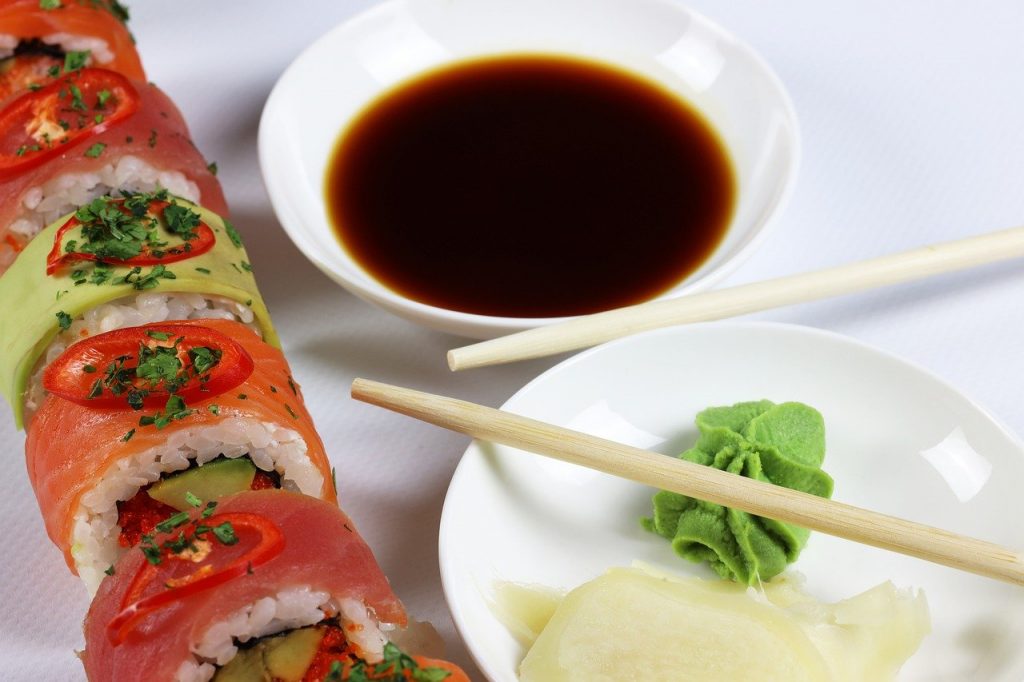
So, what is the best soy sauce? It really depends on your personal needs. To determine which one is right for you, consider these factors:
Type
There are many types of soy sauce produced in different parts of the world. These styles often have distinct characteristics and flavor profiles that make them stand out from the rest. Chinese style is the most common and these are often lighter in color.
Meanwhile, the standard Japanese shoyu is darker and it’s most sought after for sushi and other dishes that hail from the same country. You can find different versions of this, such as usukuchi and koikuchi. Korean soy sauce isn’t as salty, while Thai versions often have a thicker consistency. For a soy-less substitute, you may opt for liquid aminos.
READ ALSO: 60 Easy Thai Recipes for a Spicy Home Feast
Aging (Lightness and Darkness)
What is the difference between light and dark soy sauce? Generally, light ones (also called white) are aged for a relatively short time period, while dark (also called black soy sauce) types are those that are aged longer. Although, some types contain color additives so they may be darker in appearance. The typical aging period of soy sauce is around five to eight months.
Sodium Content
For one, there really is a substantial amount of sodium in soy sauce. After all, salt is a basic ingredient in the condiment. But if you’re looking to cut down on this, you can consider low-sodium or sodium-free soy sauce alternatives.
READ ALSO: Spice Grinders: Why You Need One and Our Top 12 Picks
Frequently Asked Questions
How is soy sauce made?
Typically, a naturally-produced type is brewed by combining soaked soybeans and roasted wheat with a type of mold to start the fermentation process and break down the grains into amino acids (which are responsible for the sauce’s dark color). Then, the fermented soybeans mixture is stirred together with brine or salt water and left to age for about six to eight months. Lactic acid is also produced in the process, giving the condiment the complex flavor that it’s well-known for.
Preservatives such as sodium benzoate, flavor enhancers like hydrolyzed vegetable protein, and/or coloring additives may also be incorporated into the mixture. Lastly, the fermented product is pressed to remove solids.
Does soy sauce go bad?
es, although this rarely happens. If unopened, the condiment would stay good for an indefinite amount of time. Meanwhile, opened bottles of fermented soy sauce typically last for two to three years when opened. Since it has a high amount of salt, you don’t really need to refrigerate it.
What type of soy sauce do Japanese and Chinese restaurants use?
Typically, commercial establishments use all-purpose types that can be used for all kinds of needs. These can be as ingredients for recipes, and/or as a dipping condiment to add before eating.
Is soy sauce healthy?
This condiment is a good source of antioxidants and probiotics that promote gut health. However, it has its drawbacks too. Since it contains a substantial amount of salt, it may be a potential risk for those with high blood pressure and other salt-related conditions. Low-sodium versions are a good compromise for this. Traditional types may also contain wheat which isn’t safe for those who are allergic to gluten. For this, you may go for gluten-free alternatives.

